Ice cream describing words
25 of the Best Words to Describe an Ice Cream
Who doesn’t love ice cream, after all, it’s one of the world’s favorite desserts?
While you’re enjoying your ice cream, you may start to think about some words to describe ice cream to explain your experience to others.
Instead of using the actual flavors as words to describe the ice cream, how about describing the look or even the feeling you get?
Keep reading to learn 25 of these words to describe your ice cream treats:
What most people love about ice cream is its taste. There are so many flavors to pick from, some that you’d never even imagined possible.
Whichever flavor you’ve chosen, you’re bound to find any of these words to describe ice cream useful:
01
Cheap
Admit it, not all ice cream tastes the same. An ice cream from brand A will taste a bit different to one from brand B, even if they are the same flavor.
The difference is the quality of ingredients, and where they are inferior, often they will taste “cheap”.
E.g. “I’ll stick to my [insert name of brand]; it might be a bit more expensive, but this tastes so cheap!”
Photo by Kelsey Curtis on unsplash
02Chocolatey
Chocolate-based ice creams are a fan favorite and they are extremely versatile.
Some can be made of white or dark chocolate, some of milk chocolate, some might even be infused with other flavors to create something entirely different.
E.g. “I’m weak for the chocolatey flavor of this ice cream. My personal trainer will be so disappointed.”
03Bitter
Ice cream is “supposed” to be sweet right? Well, some flavors are naturally bitter because of their ingredients.
Bitter is a good word to use when your ice cream has a sharp taste that is not sweet, salty nor sour.
E.g. “It’s more of an acquired taste, but bitter orange ice cream is my favorite flavor ever!”
Photo by Jer Chung under pexels license
04Delectable
Delectable is a good word to use when you aren’t quite sure how to describe the taste, but you just know you like it. The word means delicious.
The word means delicious.
E.g. “I was craving something sweet, and unexpectedly stumbled on the most delectable pint of ice cream in the store last Thursday”
05Exquisite
Ice cream with rich flavors and high-quality ingredients may be described as exquisite.
It means that it is pleasing to your tastebuds and was well made.
E.g. “You have to try this butter-pecan ice cream. It has the most exquisite flavor and pairs wonderfully with banana bread.”
06Fruity
This one is a bit obvious, but in the simplest terms, fruity ice creams taste like fruit. Some examples are cherry, strawberry, orange, kiwi, and so on.
E.g. “There’s no way you can tell me I’m not eating a fruit bowl right now. I was hesitant but I love the fruity taste.”
Photo by JÉSHOOTS under pexels license
07Homemade
Homemade ice cream doesn’t usually taste the same as commercially made ice cream. There are fewer additives, and flavors are generally more prominent.
There are fewer additives, and flavors are generally more prominent.
E.g. “I couldn’t tell that this ice cream was homemade by the looks of it, but the flavor reminds me of the buttermilk ice cream my mother made me as a child.”
08Nutty
Just as fruity ice creams taste like fruit, nutty ice creams taste like nuts. Sometimes the ice cream itself was made with nuts, in other cases they were added afterward for flavor.
The perfect example is pistachio.
E.g. “I like nutty ice creams, not because of the crunch, but because of the flavor.”
Photo by Mia under pexels license
09Plain
Plain is a good word to use for ice cream that isn’t very flavorful such as vanilla. You can also use it when you don’t wish to offend someone who hyped up its flavor.
E.g. “It’s not bad, but it’s a little too plain for me. I like big flavors.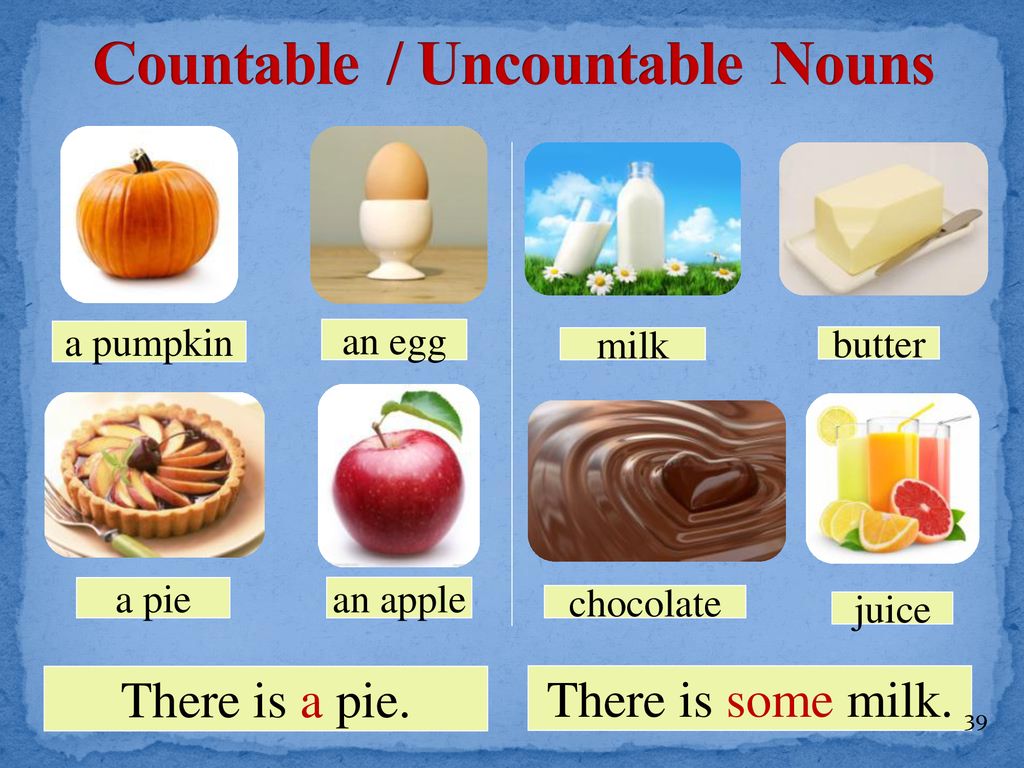 “
“
10Salty
Some ice creams are made salty, but most people who enjoy this type of ice cream are fanatics with sophisticated palates.
E.g. “I never thought I’d say this, but I might actually be a fan of salty ice cream. It’s different, but in a good way. “
11Sour
Sour ice cream is just that- sour. It will have a slightly acidic taste like lemon or vinegar.
E.g. “My kids tricked me into eating sour ice cream, but I actually enjoy the flavor.”
Photo by Maël BALLAND under pexels license
12Sweet
Sweet is the most common term that pops into people’s heads when it comes to ice cream and it’s undeniable that it’s true of most flavors.
So go ahead and use this word to describe your sweet, sugary ice cream.
E.g. “My favorite dessert is ice cream because it’s sweet and cold at the same time!”
They say you eat with your eyes and we agree. No one’s going to want to eat something that looks unpleasant.
No one’s going to want to eat something that looks unpleasant.
The appearance of the ice cream is often a good indication of how it will taste.
Here are 8 words to describe ice cream based on its appearance:
13[Insert color]
Color is a good place to start when describing ice cream.
So if it’s pink, say it’s pink. If it’s a weird-looking purplish color, say that. It helps others to visualize it where a description of its flavor falls short.
E.g. “I thought this brown ice cream would be chocolate flavored but it’s actually walnut flavored. “
Image from Canva – under one-time use license
14Creamy
Creamy ice cream looks smooth and consistent. This means there are no additions like peanuts or pieces of fruit to give it an extra layer of texture.
E.g. “That bowl of ice cream looks so smooth and creamy, like it would melt right on my tongue!”
15Chunky
Chunky ice creams are those that are not consistent in appearance and have little chunks or additions such as nuts, cookies, or chocolate chips.
These add crunch, flavor, and texture.
E.g. “Chunky monkey ice cream is a must-have for binge-watching sad movies with your girlfriends”
Photo by Kelsey Curtis on unsplash
16Disgusting
As yummy as it tastes, ice cream can begin to look disgusting when your four-year-old mixes the flavors together and puts random toppings on it. At this point, it becomes unappetizing.
E.g. “My sundae melted together and it looks sort of disgusting now.”
17Hard
Hard ice creams are those that have been in the freezer for a while and have solidified completely. This is easy to tell based on appearance and many people prefer their ice cream this way so it’s more satisfying to put on cones.
E.g. “I prefer hard ice cream because soupy ice cream simply isn’t as enjoyable for me.”
Photo by Karley Saagi under pexels license
18Inviting
As we said, you eat with your eyes, so when you visit the ice cream shop, you get drawn to and typically purchase the one that looks most attractive, or inviting.
E.g. “I’m on a strict diet but that pint of strawberry ice cream looked so inviting I had to have some!”
19Soupy
As mentioned earlier, you can tell when ice cream is hard simply by looking at it. Soft ice cream is the opposite and is very melty and messy.
E.g. “If I wanted soup I would’ve ordered it. This ice cream is way too soupy to serve a customer”
20Tempting
Tempting is a good word to use especially when you know you’re not supposed to have it, but you want to anyway. One scoop isn’t going to undo all that progress you made, is it?
E.g. “It looks so tempting, but I know I shouldn’t. You enjoy it.”
Photo by Key Notez under pexels license
Ice cream is a guilty pleasure for a reason. It helps to brighten any day, whether it was a stressful day at work, a summer day spent doing yard work, or after a bad break up.
Here are 5 words to describe ice cream based on the feeling it gives or has:
21Cool
Ice cream is a frozen treat, so of course, it will feel cool, but it will also cool you down.
This is a good word to use on a particularly hot day when the ice cream answers your prayers.
E.g. “Just what I needed. A nice, cool bowl of vanilla ice cream.”
Photo of Alex Teixeira on unsplash
22Refreshing
A glass of water might help to keep you hydrated, but ice cream will surely do the trick to refresh you and will make you feel good.
It is good to use when ice cream revitalizes or energizes you after the heat has started to wear you down.
E.g. “Watermelon ice cream is the most refreshing ice cream I’ve ever had. It’s not too sweet, but at the same time it isn’t bitter or flavorless.”
23Rewarding
Maybe it’s because your parents took you for ice cream when you were on your best behavior, or simply because it tastes so good, but there truly is something rewarding about eating it.
E.g. “The most rewarding feeling in the world is when you take that first spoonful of ice cream, and before you know it, you’ve eaten the whole lot.”
Image from rawpixel.com – under pexels license
24Sensational
This is a good word to use to describe a very rich or flavorful ice cream that dances on your tastebuds and releases a blast of dopamine.
E.g. “I had the pleasure of visiting an old ice cream shop in London and got the most sensational ice cream experience in my life.”
25Soft
Soft ice cream glides onto the spoon easily and melts in your mouth immediately. If you touch it with your finger, it will sink right in.
E.g. “I think it’s ironic that ice cream can be so soft yet cold at the same time.”
Ice cream isn’t just ice cream. You’d know that if you have ever had good ice cream in your life.
And, when you’re ready to share your experience, you now have a list of 25 words to describe ice cream at your disposal!
Adjective Words to Describe Ice-Cream
Ice cream is a mixture of milk, cream, sugar, and sometimes other frozen ingredients into a soft, creamy flavor using special techniques.
Ice cream has been a popular food for hundreds of years but has become a common place since the refrigerator was widely used. The explosive popularity of ice cream has led to many types of ice cream including frozen custard, frozen yogurt, and non-dairy versions made with ingredients such as coconut milk.
Following are some common adjective words you can use to describe the taste and flavor of your favorite ice cream:
| Big | Floating | Plain |
| Black berry | Fresh | Proper |
| Black cherry | Frosty | Pure |
| Branded | Fruit and nut | Rancid |
| Brown | Fruity | Rich |
| Cherry | Green | Rich rich |
| Cold | Half melted | Short lived |
| Color | Milky shake with | Sour |
| Cone | Homemade | Strawberry cream |
| Corn meal | Hot | Sugary |
| Cup | Incredible | Sweet chinese |
| Decent | Local | Sweet |
| Delicious | Low fat | Sweetest |
| Different | Mexican fried | Terrific |
| Enjoy | Multi flavour | Thick |
| Extra ordinary | Mushy | Unforgettable |
| Famous | Nearby | Unsteady |
| Fancy | Nice | Vanilla |
| Fat free | Pink | Yellow |
| Flavor | Pistachio | Yummy |
| No churn | Orange | Butter |
| Classic | Mint | Buttery |
| American | Indian | Semifreddo |
| Mochi | Kulfi | Spaghetti |
| Green tea | Plum wine | Rum raisin |
The variety of flavors and additives in ice cream has kept its popularity strong with consumers. From tropical fruits such as mangoes or less exotic ones like pomegranate to an unconventional coffee or basil flavor, thousands of ice-cream flavors, both nutritious and delicious are created.
From tropical fruits such as mangoes or less exotic ones like pomegranate to an unconventional coffee or basil flavor, thousands of ice-cream flavors, both nutritious and delicious are created.
Quick Links
- Words to Describe Fruits
- Words For Describing Chocolate and Sweets
The history of ice cream - from antiquity to the present
So many conflicting stories have been written about the origin of people's favorite delicacy - cold, sweet ice cream - that it is quite difficult to determine where the truth is and where the legends are.
Ice cream has been accompanying mankind for more than one millennium. The history of ice cream is very ancient and fascinating. The first ice cream appeared not in Ancient Greece or Rome, but in Ancient China 5 thousand years ago. The Chinese enjoyed snow and ice mixed with slices of oranges, lemons and pomegranate seeds.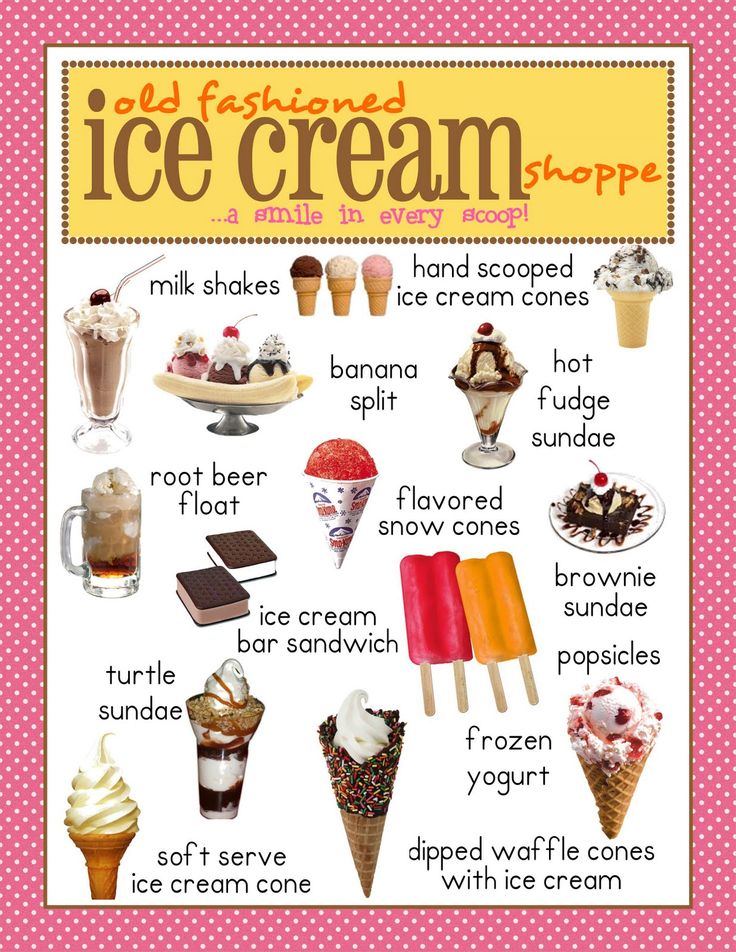 Recipes and storage methods were kept secret and were declassified only in the 11th century BC in the book "Shi-king" - the canonical collection of ancient songs.
Recipes and storage methods were kept secret and were declassified only in the 11th century BC in the book "Shi-king" - the canonical collection of ancient songs.
Another ancient source describing the use of chilled juices during harvesting is the letters of Solomon, king of Israel. Recommended ice cream to improve health and the famous ancient physician Hippocrates.
At the court of the Roman emperor Nero (1st century AD), cooling and sweetened juices were already widely used. It is noteworthy that snow for their preparation was delivered from remote alpine glaciers, and for long-term storage of snow, capacious ice cellars were built.
Ice cream was served to Alexander the Great during his campaigns in Persia and India. During a long siege of cities, a large amount of snow was mined from the mountains, in which berries and water were also frozen. In order to prevent the snow from melting, they organized special relay races of slaves. By the way, it was his soldiers who came up with the idea of adding wine, honey and milk to water with fruit.
According to legend, the recipe for fruit ice cream (chilled sherbet) was brought to Europe from China by the Venetian traveler Marco Polo at the beginning of the 14th century. The recipes for making ice cream were classified for a long time, court cooks took a vow of silence about everything that was connected with its preparation.
There are many interesting stories related to ice cream. Incredibly, but, according to sources, in 780 AD. Caliph Al Mahdi managed to deliver a whole caravan of camels loaded with snow to Mecca. Another equally striking fact is described by the Persian traveler Nassiri-Khozrau (1040 AD): snow from the mountainous regions of Syria was delivered daily to the table of the Cairo Sultan for making drinks and ice cream.
Snow and ice have been used to make fruit drinks since ancient Rome. In his book "On Culinary Art", the famous Italian culinary specialist Apicius first shared his experience in preparing soft drinks. The famous traveler Marco Polo, having visited China, fell in love with ice cream so much that upon returning to his homeland - to Italy - he did not fail to share some recipes for its preparation with domestic culinary specialists. So ice cream came to Europe. In the 16th century, it conquers France and then Germany.
So ice cream came to Europe. In the 16th century, it conquers France and then Germany.
In the middle of the XYI century, the famous Italian Bentalenti, a recognized authority in the preparation of ice cream and soft drinks, served as a culinary specialist at the court of the French king.
Queen Catherine de Medici of France was very fond of ice cream. At gala dinners, she treated guests to ice cream and sherbet, where, according to her own recipe, chilled tangerine and orange juice was added. The Medici son Henry III had a real addiction to this delicacy. Very soon, ice cream and drinks from Versailles migrated to the mansions of French nobles. This was not prevented by the most severe bans on the disclosure of the ice cream recipe, which was considered a state secret, which was guarded by a law that punished violators with the death penalty.
In 1625 Catherine de Medici's granddaughter, Henrietta Maria, married King Charles I of England. Together with the French princess, her personal chef and confectioner Gerald Tissain came to England, who knew many secrets of making ice cream. It is noteworthy that Tissin dared to share his "secrets" only after the execution of Charles I in 1649. England also mastered the secrets of making ice cream.
It is noteworthy that Tissin dared to share his "secrets" only after the execution of Charles I in 1649. England also mastered the secrets of making ice cream.
Many new types of ice cream appeared in France during the reign of Queen Anne of Austria. Once, at one of the banquets in honor of her son Louis XIV, each guest was served an egg in a gilded glass, which in fact turned out to be delicious ice cream.
In the middle of the 17th century, ice cream became available to many residents of the French capital. Numerous sellers of ice cream and soft drinks and juices appear in Paris. And already in 1676, 250 Parisian confectioners united in a corporation of ice cream workers, during these years they began to produce ice cream all year round.
History has brought us the legend that among the fans of ice cream was Napoleon Bonaparte himself. In the declining years of the former ruler of Europe, his admirers sent a device for making ice cream to St. Helena.
Under Napoleon III ( 1852 - 1870 ) ice cream in cups and ice cream (the famous ice cream comes from the French city of Plobière-Les-Behemes) was first produced in Paris, in Italy - great lovers of mixing the most incredible products, came up with ice cream - assorted with additions of fruits, nuts, liquor, pieces of cookies and even flowers, in Austria - coffee glace and chocolate ice cream.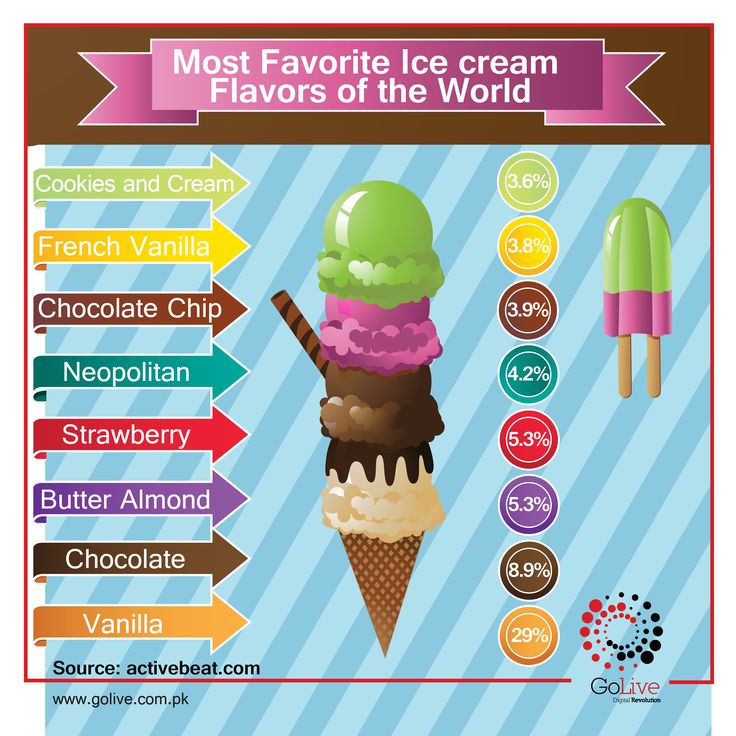
Frozen whipped cream mixed with finely chopped almonds and maraschino, puff ice cream with strawberries and dome-shaped grated chocolate appear at this time. New varieties of ice cream prepared on the occasion of celebrations were quickly adopted in mass production.
Ice cream recipes were brought to America by English settlers as early as 1700. At receptions hosted by the then Governor of Maryland, William Blade, guests were treated to popsicles and soft drinks. And in 1774, entrepreneur Philip Lenzi announced in the New York newspapers that he had just arrived from London with a stockpile of recipes for various sweets, including such a rarity as ice cream.
In 1834, American John Perkin patented the idea of using ether in a compressor apparatus. 10 years later, the Englishman Thomas Masters received a patent for an ice cream machine, which was a tin jug with a rotating three-blade spatula, surrounded by ice, snow, or a mixture of one of them with salt, ammonium salts, saltpeter, ammonium nitrates or calcium chloride.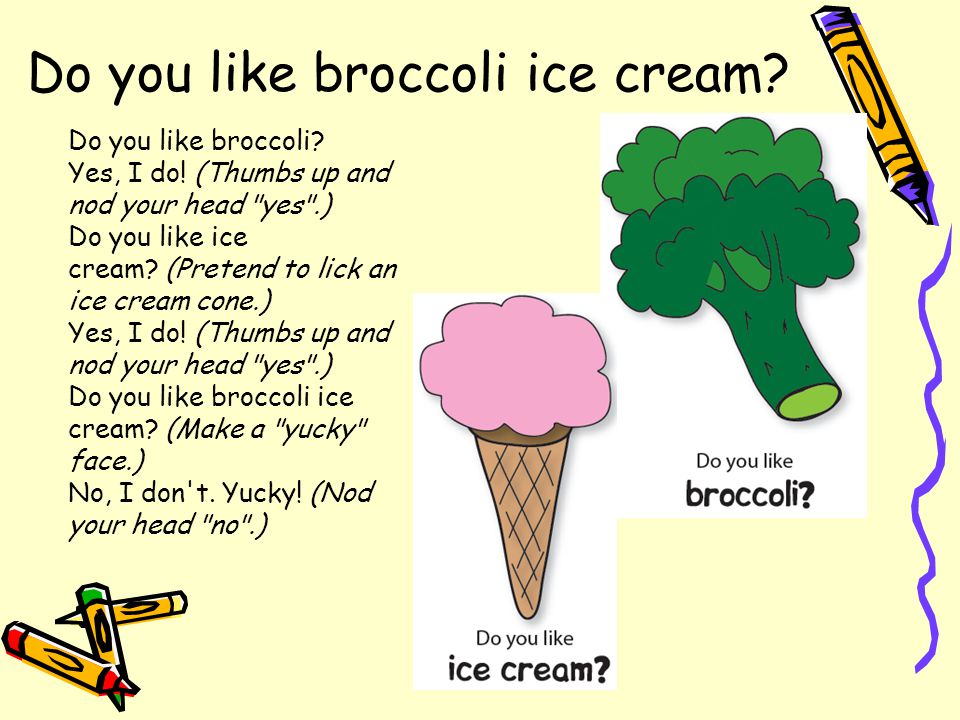 According to the patent description, Masters' machine could cool, as well as simultaneously freeze and whip ice cream. In 1848 two ice cream machines were patented in the USA. One of them consisted of a device with two concentric cylinders, one of which was filled with refrigerant. In 1860, Ferdinand Carré created the world's first absorption refrigeration machine, powered by liquid and solid absorbent. Four years later, Carré improved the compression machine, in which for the first time a new refrigerant, ammonia, was used.
According to the patent description, Masters' machine could cool, as well as simultaneously freeze and whip ice cream. In 1848 two ice cream machines were patented in the USA. One of them consisted of a device with two concentric cylinders, one of which was filled with refrigerant. In 1860, Ferdinand Carré created the world's first absorption refrigeration machine, powered by liquid and solid absorbent. Four years later, Carré improved the compression machine, in which for the first time a new refrigerant, ammonia, was used.
Many US presidents were also fond of ice cream. For example, the country's first president, George Washington, personally made it on his ranch on the outskirts of Mont Vernon. In 1919, Christian Nilson developed recipes and technology for the production of chocolate-glazed ice cream. Four years passed, and in 1923 he was granted a patent for the idea of an apparatus for the production of ice cream on a stick. So the world learned about the "Eskimo pie" (Eskimo pie) or simply "Eskimo". However, the championship in the production of "eskimo" among the Americans is disputed by the French.
However, the championship in the production of "eskimo" among the Americans is disputed by the French.
In 1979 the French firm Gervais celebrated the 60th anniversary of the Eskimo. Until the beginning of the 20th century, Gervais specialized in the manufacture of cheeses, until one of its founders, Charles Gervais, tasted the popular fruit ice cream in America.
After returning to France, he got the idea to cover the ice cream with chocolate icing and "plant" it on a stick.
According to French sources, the name "eskimo" arose by chance. In one of the Parisian cinemas, where Gervais sold his sweet products, a film from the life of the Eskimos was shown. And since the repertoire of cinemas changed quite rarely in those days, one of the witty spectators who watched a film about the Eskimos several times and ate a dozen portions of chocolate-covered ice cream during this time called it "eskimo".
Mass production of freezers began in the second half of the 19th century by Jacob Fussell in Baltimore. A little later, refrigeration machines were invented, methods for producing and storing ice were developed, which made it possible to significantly reduce labor intensity, and, consequently, the cost of ice cream. And in 1904, in the city of St. Louis, an international ice cream exhibition was held, at which the first machine for the production of waffle cups was demonstrated.
A little later, refrigeration machines were invented, methods for producing and storing ice were developed, which made it possible to significantly reduce labor intensity, and, consequently, the cost of ice cream. And in 1904, in the city of St. Louis, an international ice cream exhibition was held, at which the first machine for the production of waffle cups was demonstrated.
In 1919, American Christian Nelson developed recipes for chocolate-glazed ice cream. It was called "Eskimo Pie" (Eskimo Pie). Nelson took his products around the cities and sold them while showing a film about the Eskimos. In the end, the word "share" fell out, and ice cream on a wooden stick began to be called simply popsicle.
In Russia, people have long used their own types of ice cream, since in cold winters there was no shortage of "refrigerants" for freezing treats. Even in Kievan Rus, we served finely planed frozen milk. In many villages, a mixture of frozen cottage cheese, sour cream, raisins and sugar was made for Shrovetide.
Ice cream was loved not only among the common people, it was widely represented in the menu at the courts of Peter III and Catherine II. The very technology of obtaining ice cream in those days was quite primitive and made it possible to obtain a small amount of the product. Only in the 19th century did the first ice cream machine appear in Russia. industrial production of ice cream in our country was born only in the early 30s of this century.
Initially, the production of ice cream was based on the use of natural ice and snow, thus humanity was constantly dependent on the whims of nature. But the ubiquitous technological progress has gradually transformed the production of ice cream, turning it from an exquisite delicacy of rich salons into a product available to everyone.
Archival materials allow us to restore the chronology of discoveries in the field of ice cream production. Today it became known that as far back as 1525, the doctor from Apilia Cimara wrote about the cooling effect of saltpeter.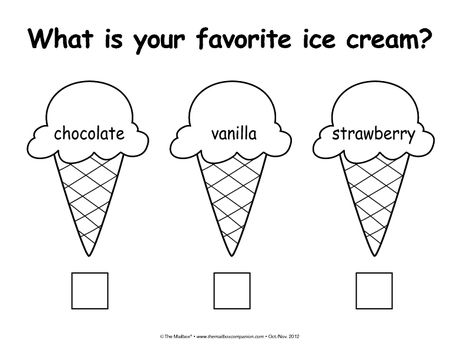 However, the production of ice cream in relatively large volumes became possible only after the introduction of sufficiently productive methods for obtaining and storing ice, cooling devices and machines with mixers and crushers.
However, the production of ice cream in relatively large volumes became possible only after the introduction of sufficiently productive methods for obtaining and storing ice, cooling devices and machines with mixers and crushers.
In 1834, American John Perkin patented the idea of using ether in a compressor apparatus. 10 years later, the Englishman Thomas Masters received a patent for an ice cream machine, which was a tin jug with a rotating three-blade spatula, surrounded by ice, snow, or a mixture of one of them with salt, ammonium salts, saltpeter, ammonium nitrates or calcium chloride. According to the patent description, Masters' machine could cool, as well as simultaneously freeze and whip ice cream.
In 1848, two ice cream machines were patented in the USA. One of them consisted of a device with two concentric cylinders, one of which was filled with refrigerant. In 1860, Ferdinand Carré created the world's first absorption refrigeration machine, powered by liquid and solid absorbent. Four years later, Carré improved the compression machine, in which for the first time a new refrigerant, ammonia, was used.
Four years later, Carré improved the compression machine, in which for the first time a new refrigerant, ammonia, was used.
Thus, the technique and technology of industrial production of ice cream has been constantly improved. In a number of countries, specialized firms began to be created for the production of machines and equipment for the production of ice cream, which has become a common attribute of urban cafes. But behind this common occurrence was rapid scientific progress in the study of cooling processes. It was he who allowed some firms to master the production of machines and equipment for the industrial production of ice cream.
Sources: allcafe.info, innovatory.narod.ru, kuking.net,
pictures from open network sources.
Ice cream (history of invention). Who invented ice cream and where was ice cream invented
Since ancient times, people, suffering from heat, have been looking for refreshing products, and sweets have always been loved.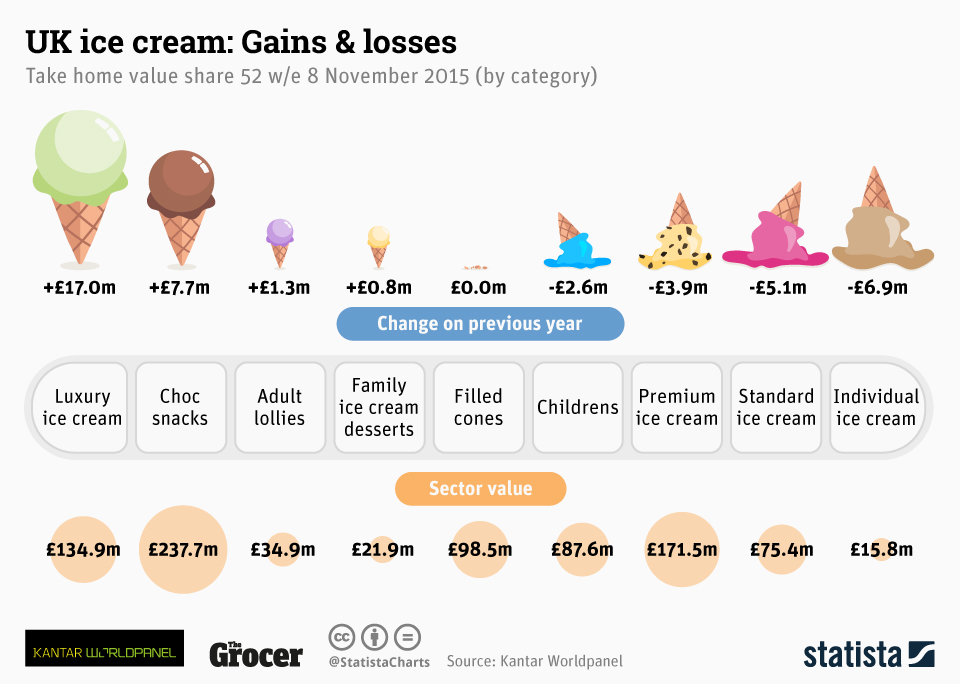 It was the combination of these two inclinations that apparently caused the invention of ice cream. The "ancestors" of ice cream can be considered fruit juices mixed with snow or ice, natural and sweetened, which were known in ancient times, back in the Stone Age, when no modern peoples yet existed.
It was the combination of these two inclinations that apparently caused the invention of ice cream. The "ancestors" of ice cream can be considered fruit juices mixed with snow or ice, natural and sweetened, which were known in ancient times, back in the Stone Age, when no modern peoples yet existed.
The first written mention of the progenitors of modern ice cream is found in Chinese chronicles, which say that fruit juices were frozen in China around 1000 BC. In the 13th century, the Mongols who conquered China adopted this delicious “remedy for the heat” from the Chinese, and soon other peoples conquered by the Mongols and part of the Great Empire of Genghis Khan, Arabs, Indians and Persians, began to use ice cream.
It is known that berries and fruits were frozen in the snow since the time of Alexander the Great. For snow, slaves were sent to the mountains, who were specially trained to run fast - so that the snow did not have time to melt.
Of course, the delicacies of the ancient Hellenes could not be called ice cream in the modern sense of the word - they were rather low-fat frozen desserts: cooled fruits with finely chopped sweet ice, frozen syrups, decoctions and juices, sherbets and fruit ice.
In 1295, Marco Polo brought to Europe a recipe for a then unknown dessert, which was cooled not only with snow and ice, but also with saltpeter. The product in a mold was placed in water (then saltpeter was dissolved in water) or in ice along with salt. After that, the inner and outer forms began to rotate, which contributed to a more rapid freezing of the product without the formation of large crystals.
This dish immediately became popular, and not a single solemn dinner was complete without ice cream, both at the palace and among aristocrats. Naturally, each chef kept the ice cream recipe a secret, and quite often ice cream became the cause of intricate and cruel intrigues - for the nobility to have their own personal ice cream maker was just as important as a hairdresser or dressmaker. And it has become even more important and prestigious to beat off a cook from his rival or sworn enemy than to take away a lover or mistress.
But soon the situation changed - Catherine de Medici brought her chef to France, who knew how to cook excellent ice cream. The advisers of the King of France immediately demanded that they be given a recipe and technology for preparing a wonderful delicacy. The recipe has become a state secret, and there are many cases where the punishment for disclosing this secret was more severe than, for example, for stealing the royal treasury.
The advisers of the King of France immediately demanded that they be given a recipe and technology for preparing a wonderful delicacy. The recipe has become a state secret, and there are many cases where the punishment for disclosing this secret was more severe than, for example, for stealing the royal treasury.
Since then, at the French court, ice cream has been eaten in myriad quantities. Even such a gourmet as Louis XIV did not refuse it.
In 1649, vanilla ice cream appeared - it was invented by the French culinary specialist Gerard Tiersen. After that, the recipe for an ice dessert was constantly updated - more and more new varieties appeared.
The general public learned the recipe thanks to Procopio de Coltelli, who opened the first ice cream parlor in Paris. In 1782, in this cafe, customers were offered up to eighty varieties of ice cream. By the way, the cafe exists to this day, and its income is unusually large.
Time passed. The number of restaurants, cafes and just eateries that specialized exclusively in the sale of ice cream grew.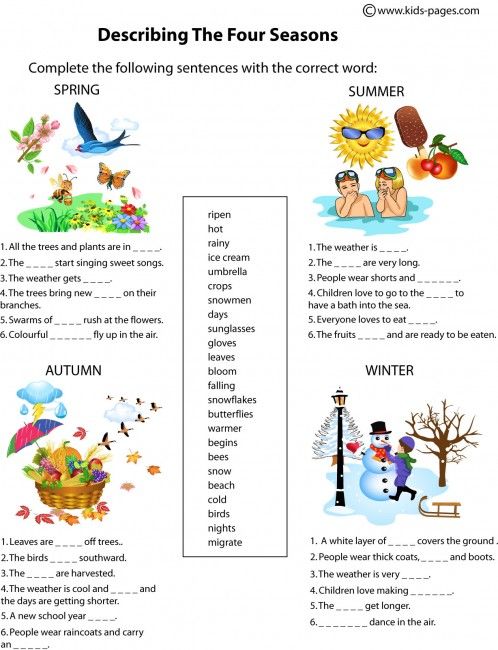 These cafes were visited by the intellectual elite of Paris: Voltaire, D'Alembert, Hugo, Anatole France, Diderot, Beaumarchais, Balzac, Verlaine, Rousseau, and even Benjamin Franklin. Loved ice cream and Napoleon Bonaparte. He even, in exile on the island of St. Helena, ordered for himself an apparatus for making them, which a compassionate Englishwoman was not slow to send him.
These cafes were visited by the intellectual elite of Paris: Voltaire, D'Alembert, Hugo, Anatole France, Diderot, Beaumarchais, Balzac, Verlaine, Rousseau, and even Benjamin Franklin. Loved ice cream and Napoleon Bonaparte. He even, in exile on the island of St. Helena, ordered for himself an apparatus for making them, which a compassionate Englishwoman was not slow to send him.
The widespread introduction of cold desserts into the household began with the advent of the hand-held ice cream stirrer. It was invented in 1843 by Nancy Johnson. The stirrer acted on the principle of a hand mixer, the perimeter was filled with ice and salt, cooling the creamy mixture. True, Mrs. Johnson did not realize that the invention should be patented. Two years later, a similar mechanism was patented by a certain Mr. Yang.
The first commercial ice cream production line was built around hand agitators in 1851 in the USA. The name of its creator, Jacob Fassel, remains in history. And the first mechanical apparatus that served the same purpose was created four years later in Australia.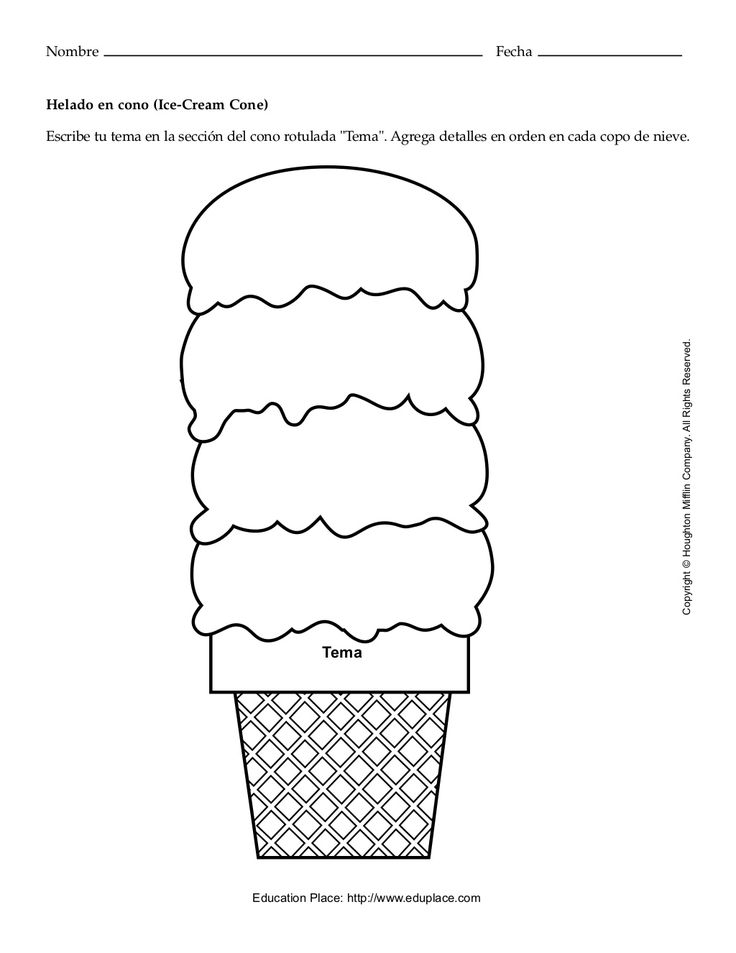 A year before the beginning of the 20th century, the Frenchman Auguste Golin invented and patented the homogenizer, and in 19In 02, an industrial ice cream cooler was invented, and the era of widespread production of this delicacy began.
A year before the beginning of the 20th century, the Frenchman Auguste Golin invented and patented the homogenizer, and in 19In 02, an industrial ice cream cooler was invented, and the era of widespread production of this delicacy began.
Creamy ice cream with fruit, syrup, nuts, etc. was first made in 1881 in Two Rivers, Wisconsin at Ed Berners ice cream shop. It cost 5 cents and was sold only on Sundays.
Even after the construction of the first ice cream factory, for many years ice cream continued to be made in the old way - using metal balls.
Initially, ice cream was served in saucers, rosettes, and sold by weight. At the end of the 19th century in Europe, cardboard and ice cream cups came into use, in which it was sold at retail.
The invention of the waffle cone is attributed to Italian immigrant Italo Marchioni, who introduced the first cone to the New York public in 1896 and patented his invention in 1903. However, the father of the waffle cone for ice cream, by coincidence, was the Syrian immigrant Ernest Humvee, who sold waffles in a kiosk at the World's Fair 19'04 in St. Louis.
Louis.
The owner of a nearby kiosk was selling ice cream, and when he ran out of saucers, Mr. Humvee began to spin waffle cones for him, which he filled with his goods. The public was delighted, and a few years later the quick Syrian created the first company for the production of waffle cones. It was this company that laid the foundation for the industrial production of horns. In the States in 1920, the first popsicle briquettes were patented.
For many years in a row, ice cream was produced in one batch, which was not stored, but sold immediately. At 1925, Clarence Vogt of Louisville, Kentucky, invented the "permanent" freezer. Soon tents (cabins) appeared everywhere, in which they sold ice cream. This sweet has become more popular than any other food.
The name of the ice cream "eskimo" comes from the word "eskimo". There are several versions of the invention of the popsicle.
There is a legend that eskimo was invented by eleven-year-old Frank Epperson, who accidentally left a glass of lemonade on the porch of the house in the evening. There was a stirring stick in the glass. That night it was cold. Forgetful Frank discovered in the morning an ice cylinder with a frozen stick. It happened at 1905 year. Although there are many white spots in this story - firstly, the boy is unlikely to leave unfinished lemonade. Secondly, who would drink lemonade outside in the cold?
There was a stirring stick in the glass. That night it was cold. Forgetful Frank discovered in the morning an ice cylinder with a frozen stick. It happened at 1905 year. Although there are many white spots in this story - firstly, the boy is unlikely to leave unfinished lemonade. Secondly, who would drink lemonade outside in the cold?
But anyway, twenty years after this incident, Epperson started making lemonades frozen on a stick and selling them in the city park. At first, he called the popsicle "Epsicle", combining his last name with the word "icicle" (icicle - icicle). At first, even his children refused to try this popsicle. They began to call the popsicle "Papsicle" (daddy's icicles). This name stuck in a slightly modified form: "Popsicle" (Popsicle). "Popsicle" was most popular at the summer sports games in 1920 years. But during the Great Depression, the company's revenues plummeted, and then the entrepreneurs released a double Popsicle, such that for five cents two children received a popsicle each.
According to another legend, the recipe for popsicle ice cream was first developed by American Christian Nelson in 1919. The first popsicle was a glazed ice cream block and was called "eskimo pie" - "Eskimo pie". In 1922, Christian Nelson patented his invention. Eskimo acquired its modern look at 1934, when popsicles began to be produced on a wooden stick.
According to the third version, the honor of the invention of popsicle belongs to Charles Gervais, one of the founders of the French company "Gervais", famous for the production of cheese. Charles Gervais was selling popsicle ice cream in one of the cinemas in Paris, where a documentary film about the life of the Eskimos "Nanook from the North" was shown. Therefore, one of the spectators dubbed the new ice cream "popsicle".
Be that as it may, in Russia, the Eskimo, so beloved by many, appeared only on the eve of the Second World War - at 1937 year. They say it was a personal initiative of the then People's Commissar for Food Mikoyan.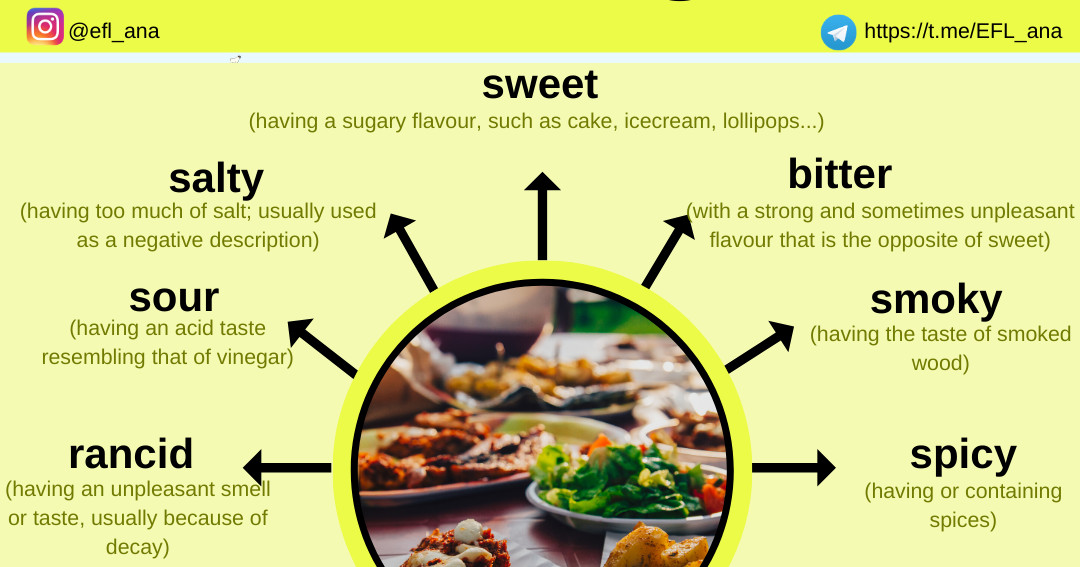 Glazed cylinders of creamy ice cream, inside each of which there was a wooden stick for convenience, were wrapped in paper. Russian popsicle was made in the capital by hand on a manual dosing machine. And the "eskimo generator" appeared at Moskhladokombinat No. 8 only 10 years later, in 1947.
Glazed cylinders of creamy ice cream, inside each of which there was a wooden stick for convenience, were wrapped in paper. Russian popsicle was made in the capital by hand on a manual dosing machine. And the "eskimo generator" appeared at Moskhladokombinat No. 8 only 10 years later, in 1947.
Some interesting facts about ice cream :
In Chile, a merchant adding coca paste to chocolate ice cream, which he said was uplifting. As a rule, customers tried a novelty and then came to buy more, thus ensuring a constant influx of customers. It turned out that an ordinary chocolate cone contained a dose of cocaine sufficient to cause the characteristic drug intoxication in eaters.
The largest number of varieties of ice cream - 709 - is offered to its visitors by the Venezuelan ice cream parlor Coromoto, which was founded in 1980 by a native of Portugal, Manuel da Silva Oliveira. Today, the owner of the cafe offers his visitors hundreds of original recipes - a waffle tube with tuna, ice cream with onions, pork rinds, beer, carrots, tomatoes, beans, trout, shrimp and squid, spaghetti, garlic, rose petals, and even an extremely spicy delicacy with chili peppers. .
.
On average, a serving of ice cream is sold every three seconds in summer.
Ice cream was very much loved by many of the greats. Napoleon, for example, was even brought a device for obtaining ice cream already in exile on the island of St. Helena. And most of all, the son of Marie de Medici, Henry III, loved ice cream. He ate ice cream in huge quantities, of any kind and at any time of the year.
Hippocrates, the father of medicine, remembers ice cream as a frozen fruit drink, as a health-improving product, and recommends it to his patients because it contains juices and improves well-being and mood.
Today, every American eats an average of 24 quarts of ice cream a year. The US produces and consumes more ice cream than any other country in the world, making it the Ice Cream World Capitol. More than 900 million gallons of ice cream are produced annually in the US. The most popular is vanilla ice cream.
In 1984, the country's president declared July National Ice Cream Month, and the second Sunday in July National Ice Cream Day, in tribute to the popularity of ice cream in the United States.
It's great to take off the wrapper from ice cream in the summer heat and taste this cold treat! Did you know that the same delight that you feel before a portion of ice cream, people have been experiencing for five thousand years! In this story, I will tell you when the history of ice cream began.
Once upon a time, in the rich houses of China, desserts were served at the table, remotely resembling ice cream - rich Chinese enjoyed snow and ice mixed with pieces of fruit and milk.
During the time of Alexander the Great, it was invented to freeze berries in the snow. It seems so simple, but where can you get snow or ice in hot countries? After all, refrigerators were out of the question then.
Invented ice cream in those parts where the heat is adjacent to the cold. That is, in the southern countries where there are mountains. Slaves were sent there for snow. And so that it would not melt, they organized special relay races, who would run faster and bring more frost to the emperor's court.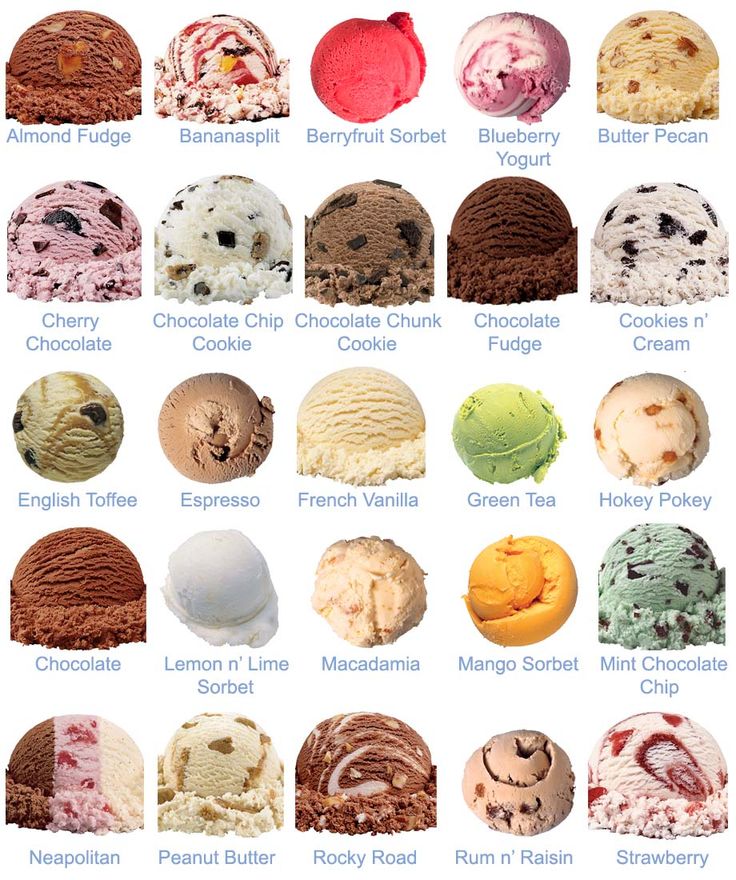 So once it was possible to deliver a whole caravan of camels loaded with mountain snow.
So once it was possible to deliver a whole caravan of camels loaded with mountain snow.
It was stored in ice cellars, the stream, walls and floor of which were covered with a thick layer of the mixture. It included egg whites, sand, clay, goat hair, ash, lime. When this mixture dried, it became strong, did not let heat and water through.
It started in Europe when a traveler brought it. Having visited China, he fell in love with this delicacy so much that upon returning to his homeland - to Italy, he shared some recipes for its preparation. The recipes were kept in the strictest confidence, and their disclosure was equated with high treason.
It is in Italy ice cream began to be considered a homogeneous, creamy creamy mass, and not ice with fruits. To prepare it, the container with the ingredients was placed in a bowl filled with ice and salt, and the milk mass was whipped. Melt water was periodically drained, adding new ice and a portion of salt. And after a couple of hours the dessert was ready. Salt helped the ice melt faster and take more heat from the food being cooked.
Salt helped the ice melt faster and take more heat from the food being cooked.
But there is always someone who will spill the beans. A young Italian woman, having married the French king, brought with her a chef famous for making ice cream.
The delicacy became public in 1660. One fisherman inherited an ice cream churning machine from his grandfather. It was a primitive device: two pots, inserted one into the other, a handle with mixing paddles was attached to the top lid. He then opened the first ice cream parlor in Paris, Prokop. Customers were offered up to eighty varieties of ice cream. This establishment is still in operation.
First plant ice cream maker opened mid 19century. Since then, popsicle, waffle cone and thousands of other recipes have been invented. One restaurant in Venezuela offers ice cream with onions, carrots, tomatoes, beans, trout, shrimp and squid, spaghetti, garlic, rose petals, and even spicy chili ice cream.
Ice cream is one of the most popular delicacies on Earth, and it is very difficult to find at least one opponent of this delicacy among the population of the country. And all this is due to its unique taste and versatility: ice cream can be both a thirst quencher and a way to decorate a festive table.
And all this is due to its unique taste and versatility: ice cream can be both a thirst quencher and a way to decorate a festive table.
Such a popular product has a very rich history of origin. The history of ice cream begins more than 5 thousand years ago. In almost all parts of the Earth, references to a frozen dessert have been found.
Ice cream highlights
Also, the first ice cream was the "dessert of emperors", so the recipe was kept secret.
The first mention of frozen ice was found among the ancient Greeks, who ate ice with the addition of honey and berries.
Information was also found that Alexander the Great liked to eat pieces of the purest snow along with fruits.
In Asian countries in 200 BC, the Chinese distilled a mixture of snow and saltpeter over vessels with syrup, as a result, this design lowered the freezing point to zero, and the syrup turned into sweet ice.
Other countries also had similar dishes, and the main ingredients remained the same - snow or ice with the addition of fruits, syrup, berries. For example, Russia had its own version of ice cream. Milk or cream was frozen, and then, cut into small pieces, served with pancakes. Only later did they come up with the idea not to cut, but to beat the creamy mass until airy and add honey, nuts, berries or raisins.
For example, Russia had its own version of ice cream. Milk or cream was frozen, and then, cut into small pieces, served with pancakes. Only later did they come up with the idea not to cut, but to beat the creamy mass until airy and add honey, nuts, berries or raisins.
In Rome, the emperors brought snow from the mountains and added fruit to it.
That is why it is very difficult to name the true discoverer of ice cream, because almost all over the globe there were references to a frozen product with the addition of sugar-containing ingredients.
France pioneered ice cream in Europe
However, the first recorded evidence of the production of ice cream in our understanding belongs to France in the 16th century. At first, the recipe for making ice cream was strictly kept secret and only the richest segment of the population, the kings and his entourage, used it. The first mention of the preparation of such ice cream appeared in 1533, when Catherine de Medici decided to marry Henry II. During the feast, the table was bursting with an excess of various unusual cold dishes that were pumped over from the Italian cuisine. The future king of France liked the dishes so much that no other feast was held without these frozen treats.
During the feast, the table was bursting with an excess of various unusual cold dishes that were pumped over from the Italian cuisine. The future king of France liked the dishes so much that no other feast was held without these frozen treats.
The next mention of ice cream comes from the 17th century, when Henrietta Maria (Granddaughter of Catherine de Medici) decided to marry the English king. The wedding was attended by a personal confectioner brought from France. And again, the king was struck by outlandish frozen dishes, which instructed his chefs to learn the secrets of preparing this dish.
Karl soon assumed the status of the man who invented ice cream. But the idle life of the English king did not last long, because he lost his throne, and the king's confectioner fled to Paris with a recipe for making ice cream.
After the escape of the pastry chef, the unknown Italian Francesco Coltelli opened his first cafe in Paris, where he allowed people to personally taste the "Royal Dish". Ice cream became so popular that after 40 years there were about 250 producers of this delicacy, and Coltelli himself came up with about 80 types of ice cream with the most amazing tastes.
Ice cream became so popular that after 40 years there were about 250 producers of this delicacy, and Coltelli himself came up with about 80 types of ice cream with the most amazing tastes.
But while Paris was showing off its new product, the provinces did not sleep and began to create their own recipes. For example, in Plombert-les-Bains, local ice-cream makers, experimenting, created a new ice cream recipe, they mixed heavy Normandy cream, sugar and eggs. As a result, a creamy mass was obtained, which was to the taste of many and became more popular than the Coltelli recipe.
After France and England, the popular delicacy reached North America, where the wealthy leaders of the "New World" simply fell in love with this dessert. The ice cream recipe was perfected when Thomas Jefferson, as president, ordered ice cream to be served in the White House for an afternoon snack, but made from custard-based balls in a waffle cone.
Plombir came to the USSR
In the USSR, the first ice cream appeared in the 19th century and immediately acquired a cult significance, not a single ball or social event took place without this fabulous delicacy. At that time, the preparation of ice cream was very difficult, since the production technologies were imperfect, so only the most skilled court chefs were trusted to make ice cream. But still, the ice cream recipe was recognized as a masterpiece, and it was in almost every cookbook.
At that time, the preparation of ice cream was very difficult, since the production technologies were imperfect, so only the most skilled court chefs were trusted to make ice cream. But still, the ice cream recipe was recognized as a masterpiece, and it was in almost every cookbook.
In mass production, ice cream began to appear in the USSR only in 1930, although the machine that produces the ice cream mass (freezer) appeared in 1842 and was even patented by the Russian merchant Ivan Izler.
This invention did not receive due attention, so the first ice cream in Russia appeared only with the use of European equipment at the Moscow dairy plant.
But the needs of the population grew, and the product was not enough due to outdated equipment, so the situation was saved by Mikoyan, who opened a factory for the production of ice cream, borrowing technology from American comrades. And soon the volume of production rose to unprecedented levels.
The creamy dessert has a very rich history. During such a long historical journey, ice cream has changed a lot: new extravagant tastes, new forms, and so on have appeared. But the majority still prefers the usual Russian ice cream or popsicle. Therefore, go to the store for another creamy dessert or.
During such a long historical journey, ice cream has changed a lot: new extravagant tastes, new forms, and so on have appeared. But the majority still prefers the usual Russian ice cream or popsicle. Therefore, go to the store for another creamy dessert or.
Loved by many since childhood, tasty, tender, melting in your mouth delicacy - ice cream. Where is his homeland? Where did it come from to us? Perhaps from the North, given its cold component?
It's hard to believe, but the ancient East is rightfully considered the birthplace of ice cream. It was there that "sweet ice" first appeared - the great-grandfather of modern ice cream. It was prepared from snow and ice, adding a flavoring component - fruit juices. In the homes of wealthy Chinese, it was considered good form to serve such a delicacy to guests.
"Sweet ice" had admirers in ancient Rome and ancient Greece. Emperor Nero, famous for his cruelty, often ordered to cook him a "snow delicacy". The great healer Hippocrates also respected the ice dessert, considering it extremely beneficial for health.
How was it possible to prepare and store this dessert, unusual for that era, because refrigerators had not yet been invented?
The fact is that in those distant times, a cold delicacy was available only to the elite, who had the opportunity to comply with all the conditions for its preparation. So, for example, Alexander the Great entrusted his most enduring runners with the delivery of the main component of this dessert - snow. After delivery, the snow was immediately mixed with fruit juices and served to Alexander.
The ancient Chinese, apparently not trusting the runners in this important matter, came up with the idea of using a mixture of snow and saltpeter for better cooling. It was with the help of this mixture that the containers with the future ice cream were cooled.
In ancient Rome gourmets used natural "refrigerators". They dug deep holes and filled them with packed snow. In such a "refrigerator" a favorite treat was stored for months.
These methods, primitive by the standards of modern times, of making a cold dessert gradually developed and supplemented, giving mankind an adored delicacy.
When did ice cream come to Europe?
It is generally accepted that Europeans were introduced to ice cream by Marco Polo, a traveler from Venice. The procedure for making this dessert, at which he was fortunate enough to be present in China, made a great impression on him. So the Italians discovered a new dessert.
The compatriots of the famous traveler zealously guarded the method of making cold sweets, considering it no less mysterious and significant than the secret of making Venetian glass. Italian culinary specialists managed to keep the secret so carefully that ice cream spread throughout the rest of Europe only in the 16th century.
The French Queen Catherine de Medici, following the example of the Italians, who were the first to know the secret recipe, carefully kept the information received about this unique dish. The method of making ice cream was declared a state secret, for the disclosure of which the violator was threatened with the death penalty.
The French have become one of the most enthusiastic fans of ice cream. For example, Napoleon Bonaparte, even in exile, could not live without his favorite dessert and organized the delivery of a special apparatus for its production to the island of Elba.
France is partially considered the birthplace of ice cream, namely the town of Plombieres-les-Bains, where ice cream originated. The composition of the ice cream invented by French chefs included eggs that had previously undergone a freezing procedure, cream and fruits with sugar were added to them. Of course, the dessert prepared according to this recipe was different from the modern ice cream, but it has every right to be considered its predecessor.
The British did not lag behind the French. In the 19th century, Agnes Marshall pioneered the idea of serving ice cream in an edible cup. Thanks to her activities, the use of ice cream has spread among people with average incomes. Another Englishwoman, housewife Nancy Johnson, came up with a freezer - a special machine for making ice cream.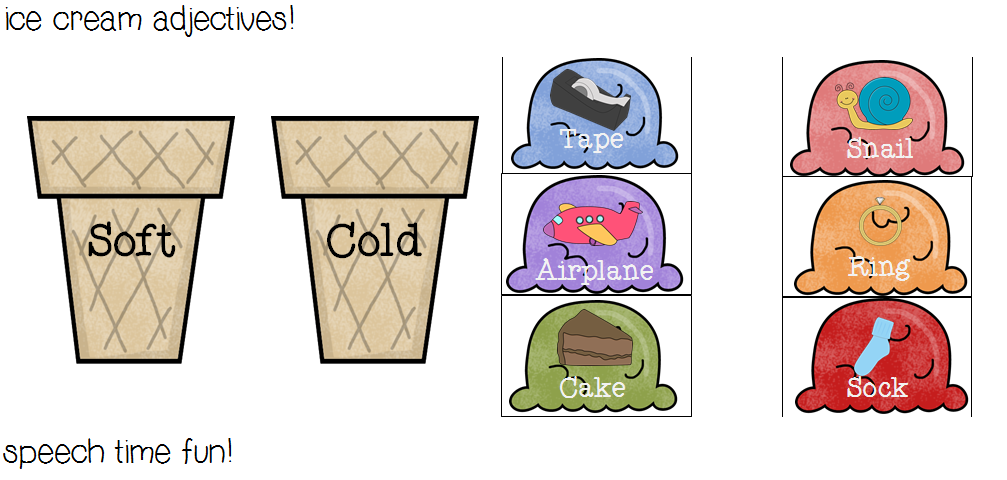 From that time to the present, the process of converting a liquid workpiece into an initial product is called freezing.
From that time to the present, the process of converting a liquid workpiece into an initial product is called freezing.
How did ice cream originate in Russia?
Who was the first to come up with the idea of making and eating ice cream in Russia there is no exact data, but there are known historical facts of the use of an unusual dessert in Kievan Rus. It was a frozen sweet milk chopped into small chips, or, alternatively, cottage cheese with raisins and sugar. Russian winters were distinguished by severe frosts and a considerable duration, the climate itself contributed to the spread of this delicacy among the not very rich population. The blanks for the future dessert were simply taken out into the street and waited for it to be ready.
Residents of Europe at that time knew nothing about such a recipe. Ice cream in a version similar to modern appeared in Russia closer to the 18th century. It included milk, vanillin, ice and fruit juice.
And now ice cream becomes a consumer product
Industrial production of ice cream started in the USA (Baltimore). In 1851, Jacob Fussel, known as the "father of the ice cream industry", launched the mass production of this dessert.
In 1851, Jacob Fussel, known as the "father of the ice cream industry", launched the mass production of this dessert.
In the 20th century, ice cream, one might say, experienced its second birth. The main reason for this was the widespread distribution of affordable refrigeration equipment in many countries of the world.
In Russia, after the revolution of 1917, ice cream acquired the status of a relic of the past. In those years, it was practically not produced. However, in the 1930s there was a revolution in the attitude of the authorities to this undeservedly forgotten dessert. In the USSR, since 1932, the growth of factory production of ice cream begins. It turned into a mass food product, it was prescribed to sell it at prices affordable to the general population.
In 1941, GOST 119-41 was developed for this type of product, which earned a reputation as the toughest in the world. The era of the famous Soviet ice cream began, the quality of which is still remembered by the older generation.
Since 1990, it began according to technical specifications. In modern Russia, more than half of the producers make ice cream using herbal supplements, so the older generation with sadness and nostalgia remembers the same “Kashtan” for 28 kopecks or the famous “Lakomka”.
As compensation for the loss of the unique taste of Soviet ice cream, today you can taste new types and varieties that cannot be called anything other than exotic. For example, in Venezuela, tourists are happy to visit a local attraction - a cafe founded in the 80s of the last century, where more than 700 types of ice cream are presented, including beer, onion, shrimp, tomato ...
In fact, exotic types of ice cream did not appear today. So, researchers of the life of the peoples of the Far North know a dessert respected by the local population. This is akutak, a dish of Eskimo cuisine, which is prepared on the basis of whipped fat (walrus and reindeer fat, seal fat) with local berries (cloudberries, cranberries), fish and sugar.
There are options for preparing this dish with the addition of leaves and roots.
Dishes related to ice cream were in the cuisines of other peoples, for example, in Iran they froze threads of their food starch with rose water and lime juice.
In Colombia, ice cream is prepared from cicadas, which, after harvesting, are processed in a special way and added to ice cream as a flavoring component.
In the Philippines, you can taste crocodile egg ice cream. Fans of healthy eating claim that it is extremely useful.
Today there is a glowing ice cream: the glowing effect is achieved by adding jellyfish to the protein recipe. By paying a considerable amount of money, you can try ice cream that changes color as it is eaten.
Ice cream is a very ancient delicacy. The history of the invention of the most popular dessert goes back to the time of the most ancient civilizations of Asia - China and Mesopotamia. Ice cream was admired by Alexander the Great, Napoleon and George Washington, and several people patented it at once.
It is believed that the history of ice cream goes back over 5000 years.
Back in 3000 BC in wealthy houses China Desserts were served at the table, vaguely reminiscent of ice cream - rich Chinese enjoyed snow and ice mixed with slices of oranges, lemons and pomegranate seeds. The Chinese emperor Tanggu even came up with his own recipe for making mixtures of ice and milk. Recipes and storage methods were kept secret and were declassified only in the 11th century BC in the book "Shiking" - the canonical collection of ancient songs.
Another ancient source describing the use of chilled juices during harvesting is the letters of Solomon, king of Israel. The tradition of eating ice cream was adopted by the ancient Arabs. Also, the ancient Greeks consumed chilled wines, juices and dairy products, and other civilizations followed them. Recommended ice cream to promote health and the famous ancient doctor Hippocrates .
N. Chernyshov "Novgorod Ice Cream Girl", 1928
And therefore the struggle for the buyer is not for life, but for death. The best and most expensive varieties are made from elite natural products based on the most modern technologies. The quality of such ice cream can be judged at least by the fact that, without any preservatives, it can be stored in the refrigerator at a temperature of -20 o C for up to two and a half years.
The best and most expensive varieties are made from elite natural products based on the most modern technologies. The quality of such ice cream can be judged at least by the fact that, without any preservatives, it can be stored in the refrigerator at a temperature of -20 o C for up to two and a half years.
In pursuit of consumer demand, the leaders of the world market annually update their range, although there are already several thousand items of ice treats. Among the hits of recent years are walnut ice cream, green tea ice cream, forest herb ice cream. Not to mention currant, blackberry, pineapple, special varieties based on live yoghurts ... It's impossible to list everything.
A soft ice cream - British scientists (whose group included the young Margaret Thatcher) came up with a method in which twice as much air is added to ice cream, and "soft" ice cream is obtained!
In the 1990s thicker ice cream of the highest quality appeared. This category includes Ben and Jerry's, Beechdean and Haagen-Dazs. By the way, Ruben Mattus invented his ice cream back in 1960 and called it Haagen-Dazs because it sounds Danish.
By the way, Ruben Mattus invented his ice cream back in 1960 and called it Haagen-Dazs because it sounds Danish.
Which one to choose?
In fact, any ice cream is a chilled whipped emulsion of a mixture of milk, possibly cream, sugar, sometimes eggs, often fruit juices, various fruits or vegetables (in Japan even from fish and seafood) plus flavorings and various additives such as nuts or pieces of caramel.
Depending on the production method, ice cream is hardened, soft and homemade. Soft , with a temperature of 5–7 o C, is made in restaurants and cafes on special equipment. You need to eat it right away, for the future such desserts are not prepared. It looks like a cream.
Hardened ice cream - industrial. It is divided into several groups - by the type of the main product and filler and by packaging. The main representatives of the "dairy" group - dairy, cream and ice cream - differ from each other in their fat content.
Other groups - fruit and berry or fruity and aromatic. There are also so-called amateur, or homemade, types - milk-based, fruit, milk-fruit, multi-layered, with egg white and even with confectionery fat.
Now for specific numbers. The fattest ice cream is ice cream, its fat content is on average 12–15%.
It is named after the French city of Plombière, where it was allegedly invented. Allegedly - because in France ice cream is made from English almond cream with the addition of whipped cream and candied fruit infused with cherry vodka. We, of course, have a simpler ice cream, but still - the fattest and most high-calorie ice cream.
Then - cream, with a fat content of 8-10%, then - milk, in which there is even less fat, only 2.8-3.5%. There are no milk fats in fruit and berry ice cream and fruit ice, because they are made from fresh and frozen fruits and berries, from puree, natural juices, marmalade and jams.
And, of course, every consumer is interested in the quality of ice cream.











